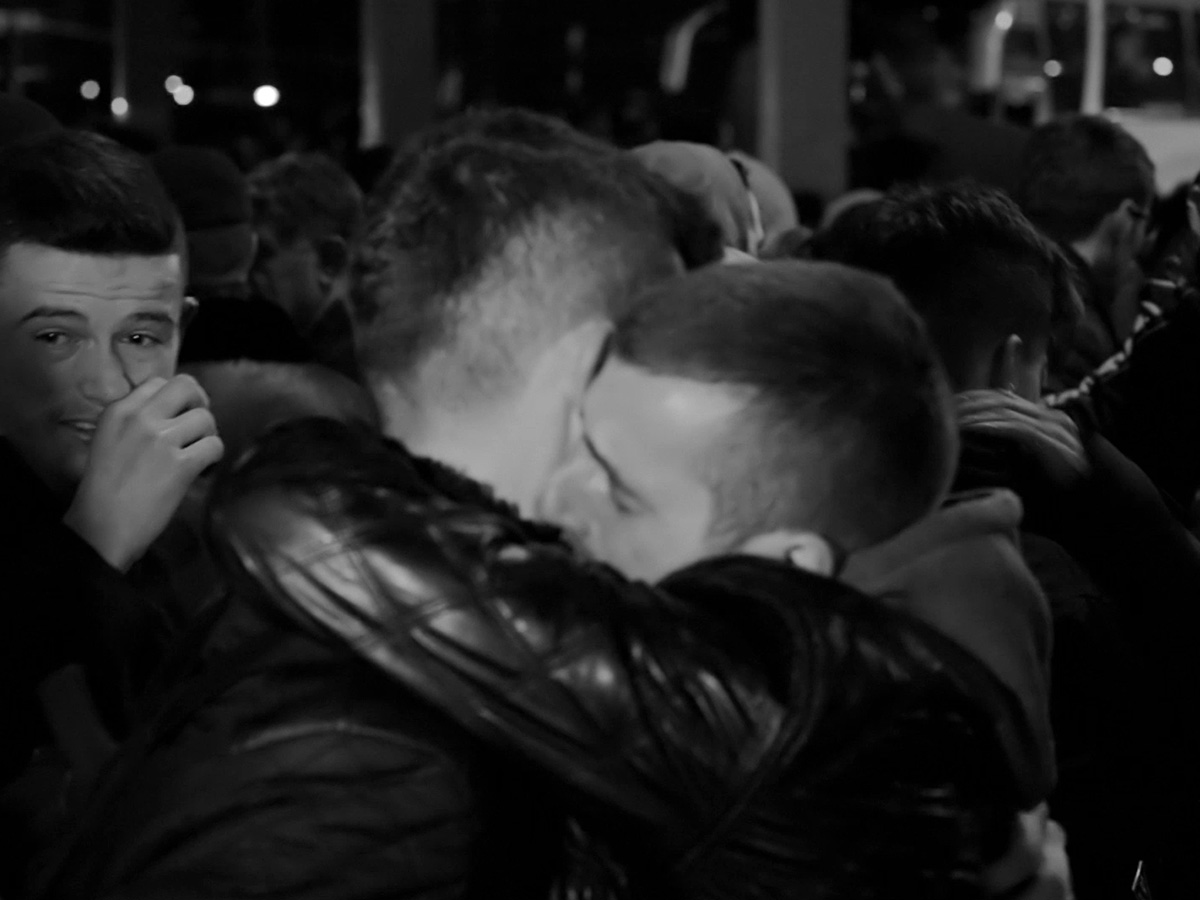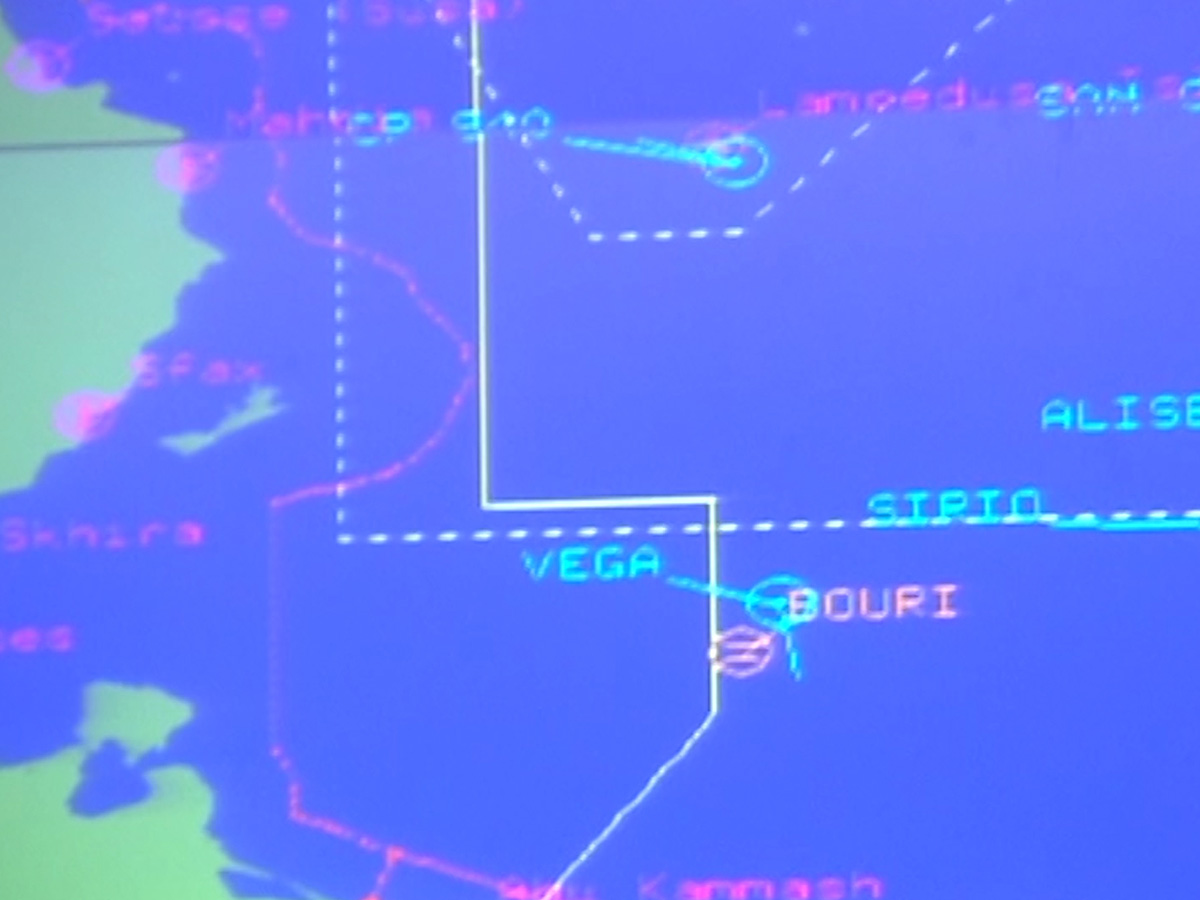
Note on Multitude
A large and anxious crowd prevails in this chilling black-and-white short film, shot with one camera in Pristina, Kosovo, in 2015. Intimate, emotional, and sometimes violent moments of farewell: men, women, and children leave their homes for an (unknown) future as migrants.
The opening is a line. A line is a connector (from A to B) as well as a divider (‘here’ and ‘there’, ‘up’ and ‘down’, ‘inside and out’.) A line is the axis of order, a lesson in how to make sense. A line of people, however, is a collective statement on the need for order. In this case, the opening is a line of humans seeking to reinvent themselves.
Note on Multitude observes a multiplicity of queues—at first, from afar, and then, up close—aggressively bridging the distance with rapid cuts where ‘here’ and ‘there’ switch up their positions. In less than eight minutes, Ibro Hasanović (director, cinematographer, editor) has encapsulated an ever-unfolding web of stories, their nuclei forever embedded in these black-and-white nocturnal shots. A harsh but beckoning pull becomes the connecting tissue between sequences as bodies make room for faces in conversation with other faces. The camera’s lens does not choose who is sharply defined and who remains blurred—the focus switches way too fast in an attempt to outrun time, to stretch it out a millisecond more, to stamp that face as it was then and there. There is something of the idea, expressed by Andre Bazin, that cinema is “change mummified,”1 almost like a special veil of imprints, recorded and transported onto our screens.
At all times, we hear a lot, all at once. Whether the noise is discernible or not is out of the question since all the sound in Note on Multitude is talk over talk over talk, layered, with different volumes—a polyphony of voices brought together by the field recording, interspersed with the sound moving bodies make in the cold: a zip being pulled up, the light squeal when two puffer jackets brush… The hugs are no less audible, one happening after the other, stringing a never-ending sequence. Are they buying pre-departure time, or has the journey already begun, even before the goodbyes?
When do we leave our home: is it when we board the bus that will (hopefully, but not certainly) take us abroad, or when we find ourselves on the other side of the door of our house? Maybe we had already left as soon as we bought the ticket or when we first told another of our intent? Or maybe it all starts with that one thought, that “what if…’? All these micro-events can be retraced in a simple goodbye, exchanged, and multiplied at the bus station the images are shot.
With a seeking gaze, the camera latches onto people’s faces as they slide in and out of embraces, in and out of the frame. The distance—unstable and often traversed in a quick cut from long shot to close-up—is what makes me question all boundaries: of space and time, of emotion and composure, and of the film itself. Where does a film frame begin and end? What is it about its way of slicing up reality to fit an animated rectangle that makes it look so delicately imbued with love instead of being violently torn off? The camera is not an eye, but it provides a way of seeing, however prosthetic it may seem. What it records helps us see more clearly, in spite of (or maybe because of) the distance and the technological mediation implied. For Note of Multitude, this is the only valid way of seeing, the one instance when the verb ‘to capture’ unshackles instead of denoting captivity.
Every farewell owes its ambivalence to that pang of departure pain, amplified by the pain of being left behind, and so do the long goodbyes in Hasanović’s short. Amongst the ones who are supposed to leave, there are also many who won’t be able to do so. On the one hand, we have multitudes, and on the other – not enough buses.
Do you remember where you were on March 6th, 2015? Because the people here do: as a day that changed the course of their lives as they rush to board buses that would take them to Serbia and Hungary in the hope of finding a better life out West. Pursuing the “Occidental dream” was the only affordable future for 75,000 Kosovars in 2015 alone2 and the film’s laconic way of alluding to the big economic-political-social issue at stake by only naming the place and date of its origin (Pristina, Kosovo 06.03.2015) as an afterward only underscores how urgent it is to direct our attention at it.
Only two months earlier, in January 2015, expansive protests had the windows of the main government building in Pristina remain shattered for weeks as an enduring witness to the outlets of overflowing frustration. Kosovo’s recent history is marked with discontent, inner struggles, and dichotomies as a country whose independence has been contested and ardently fought for. ‘Home’ is, almost by definition, a place of turmoil and ambivalence: where one strives hard to assert their independence and at the same time yearns to belong to.
By capturing the moments of departure, Hasanović may as well be contributing to a multitude of family albums at once; the home video genre rethought as the ‘leaving home’ video. Note on Multitude pays attention to the in-between spaces, which allow for reactions of all sorts—crying, laughs, warm hugs, avoidance, pushing and pulling, exhaustion—a space that belongs entirely to those who are in the film—the unnamed hundreds of whom we know nothing and yet we get to witness them intimately. With this film, Ibro Hasanović has built them a home.
Following a fictional group of refugees across Europe, the film questions the overproduction of images surrounding real-life tragedies and deaths.



